Indian Nested Stacking Dolls, Set of 3 Colourful Matryoshka Babushka
Indian Nested Stacking Dolls, Set of 3 Colourful Matryoshka Babushka
Couldn't load pickup availability
These beautiful hand-painted nested dolls feature three differently sized dolls adorned in elegant polka-dotted Indian traditional garments - Sari (also known as Saree), Bindi on their forehead, and bangles. Sari is an elaborate garment that is a symbol of India’s rich culture and can be tied in many different ways.
This set contains 3 dolls of decreasing sizes placed one inside the other.
These colourful Matryoshka dolls (also called 'Russian Dolls') are a beautiful and unique way to decorate your home. Great as a stocking filler on Christmas or a unique gift to your loved ones on any occasion. It is also an amazing collectible gift for a sari lover!
Features
- Hand-carved and hand-painted on Indian wood by expert artisans
- Due to the handmade nature of this item, each is unique and will vary
- Easy to store
- Traditional Indian look - Women wearing red sari garment with a green blouse, bangles on hands and bindi on forehead
- Fair Trade product - add it to a bookcase or shelf for a pop of colour
- Made in India
Dimensions
- Big Doll Height = 140 mm, Width = 55 mm
- Medium Doll Height = 100 mm,Width = 45 mm
- Small Doll Height = 70 mm, Width = 30 mm
Note
- Due to the nature of hand-made products, kindly expect slight imperfections. This is not a defect and "Handmade Indian Nested Dolls (Set of 3)" is non-refundable for this reason.
- Care instructions: wipe clean with a soft dry cloth
Share
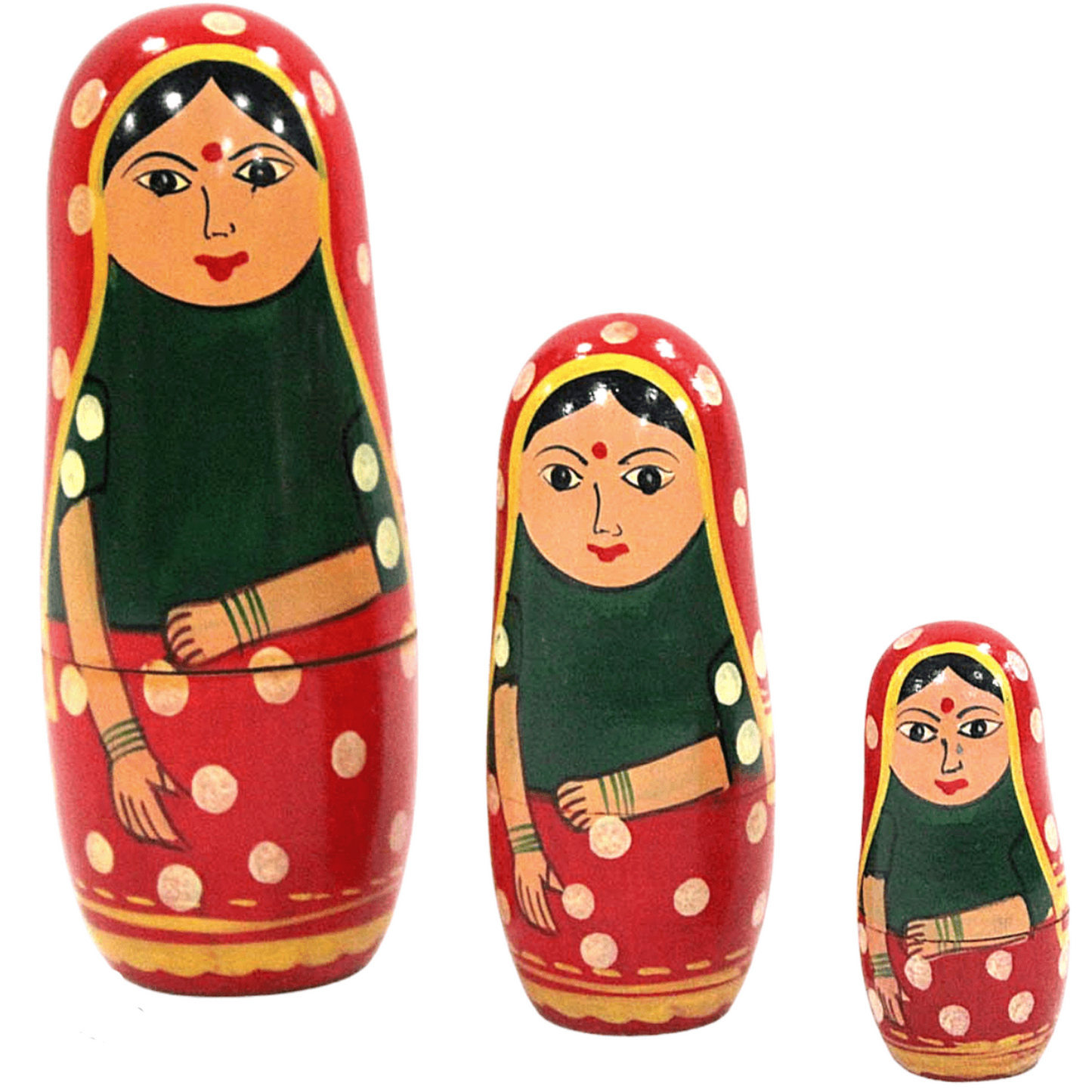
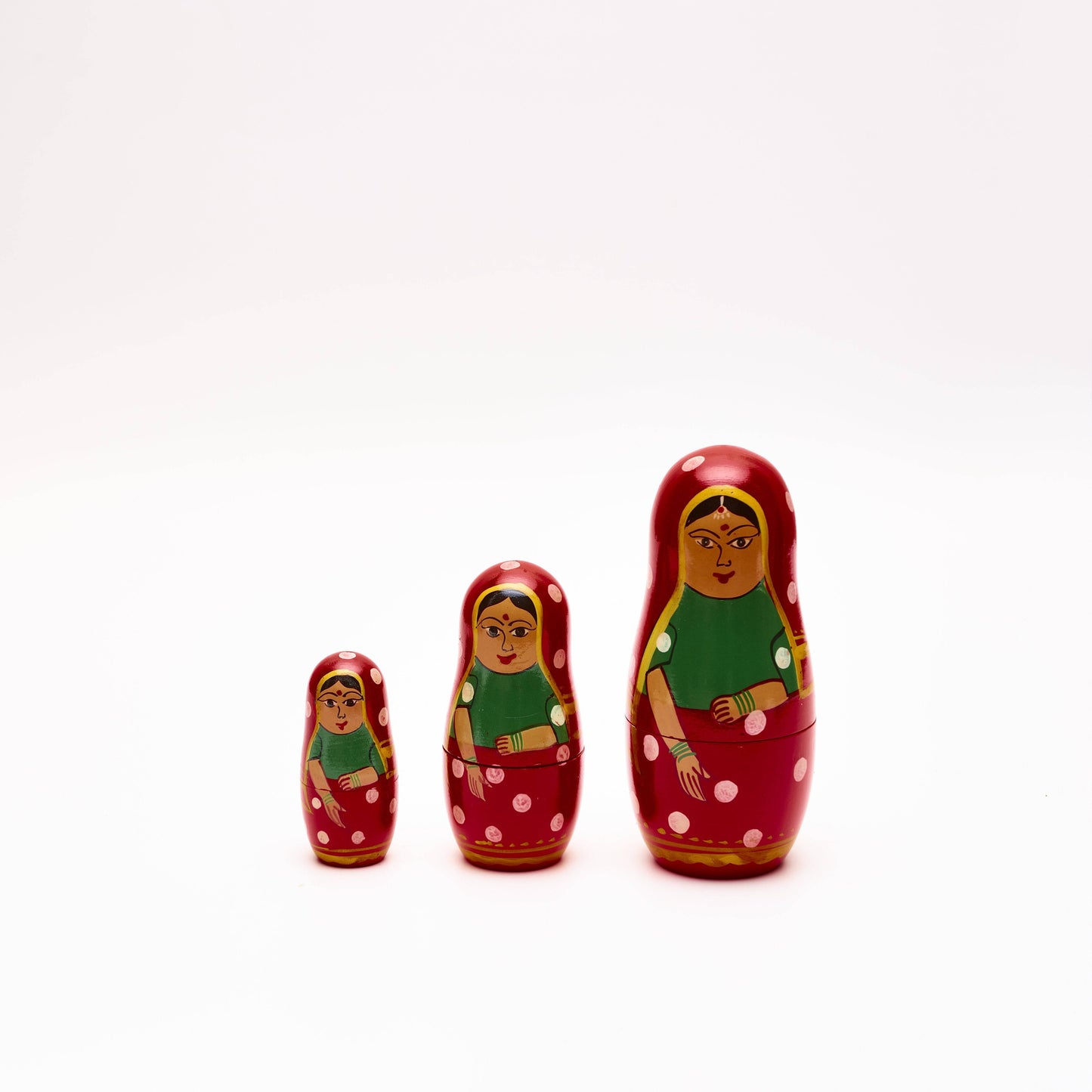
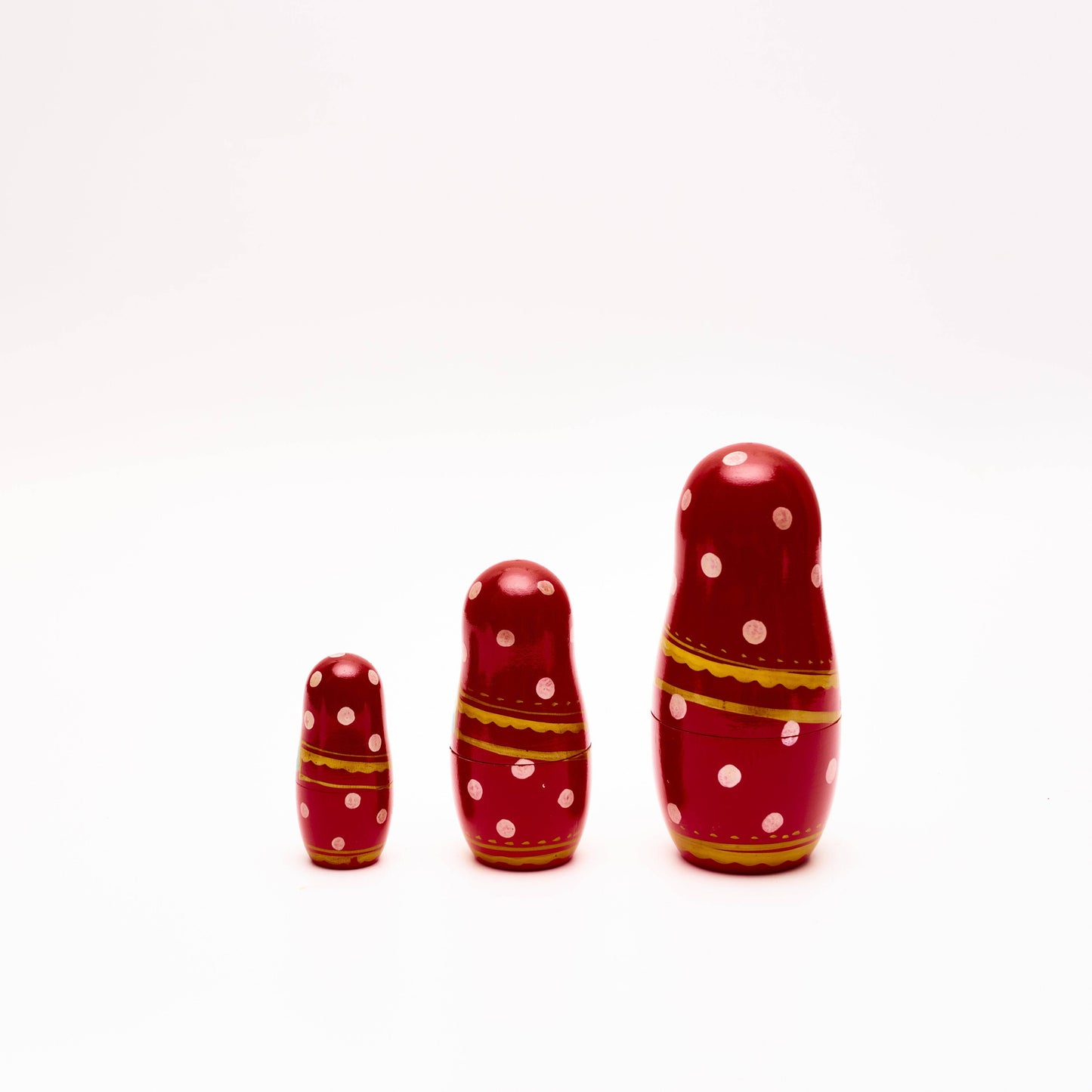
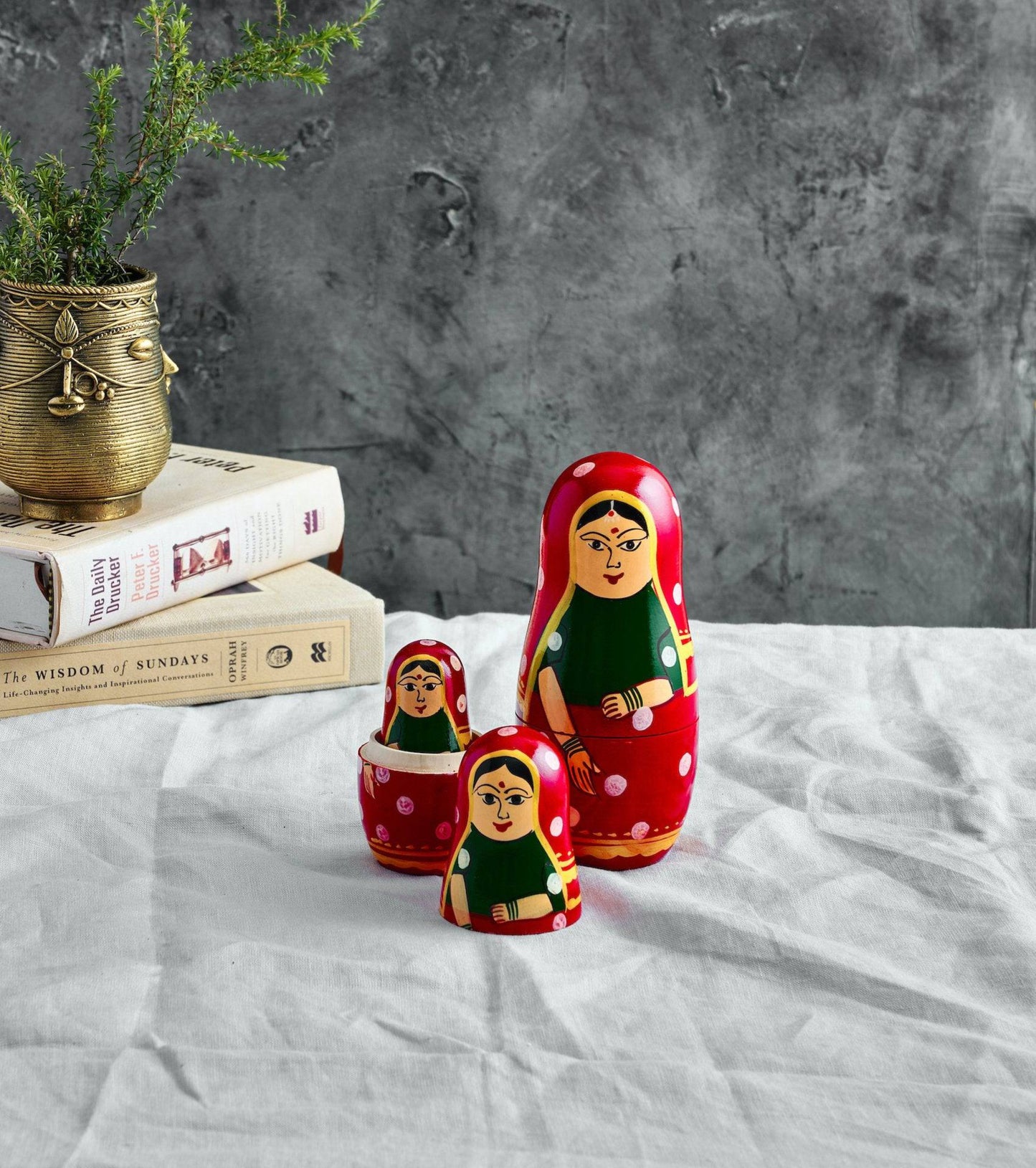
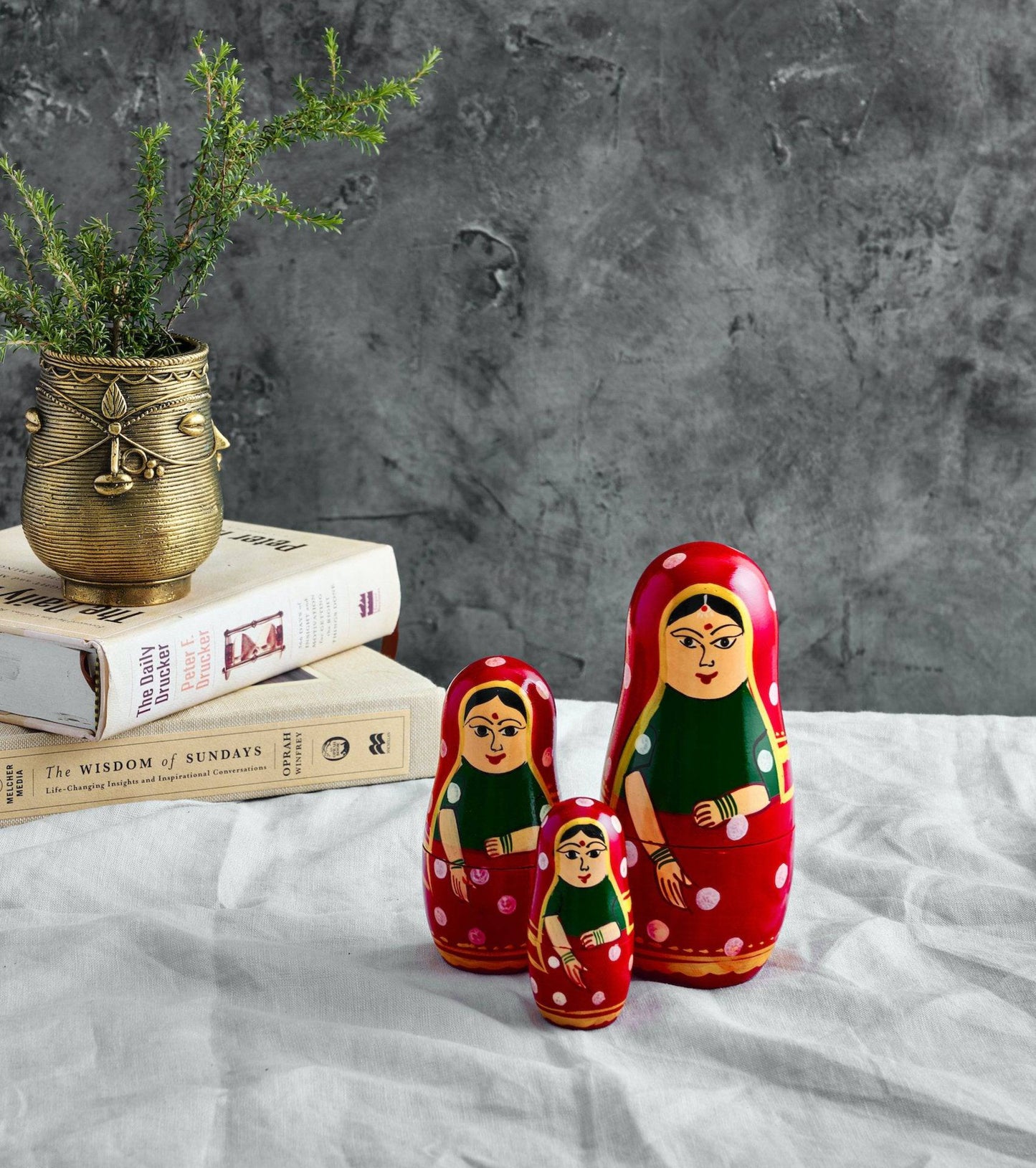
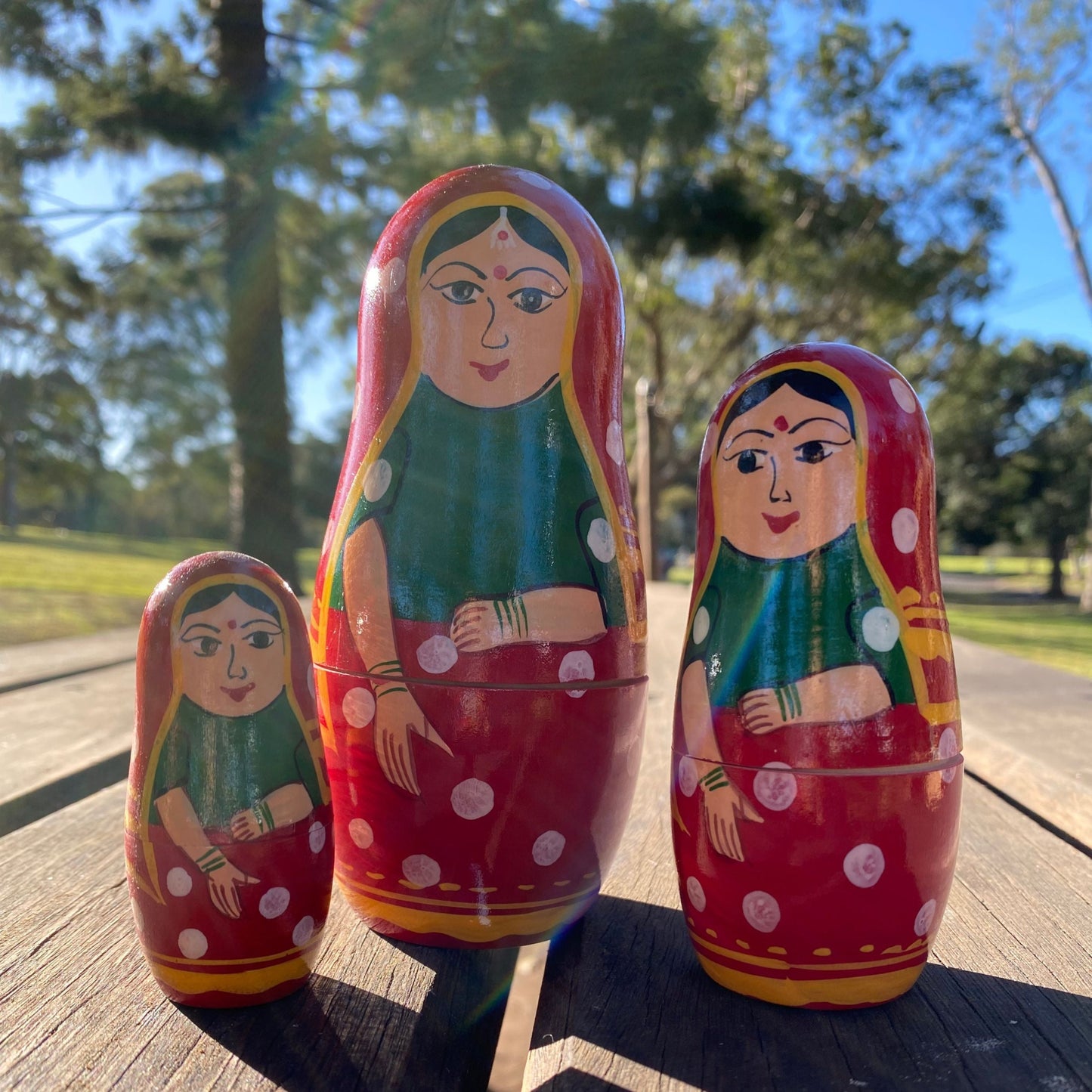
-
Free Shipping over $75
Shipping Policy$10 Fixed standard shipping fee is waived off when the order value is $75 or above (AU) and $100 or above (NZ).
-
-
Buy Now, Pay Later
Choose your favourite service - AfterPay, Zip, Latitude Pay, Klarna
Collapsible content
Why is the Aksa Nested Doll Set the best?
This Set of 3 Colourful Matryoshka Babushka dolls takes a beloved art form and infuses it with the rich, joyful colours and intricate detail of Indian design. They are not just toys; they are Fair Trade collector's pieces, handmade by artisans, bringing a unique, captivating story to your shelf.
Reasons to love -
- Fair Trade - Aksa is a fair trade shop. This means every nested doll has been lovingly crafted by an artisan in return for economic independence, welfare and community engagement. Read more about the 10 Fair Trade principles. We are also the recipient of the 2023 Australia Post Local Business Hero Award Winner.
- Handmade: Our nested dolls are entirely handmade using hand tools and traditional craftsmanship passed down through generations. This means each piece is unique in its own beautiful and warm way in terms of design and beauty.
- Eco-friendly, Sustainable Raw Materials: All of our nested dolls have been handcrafted in India using eco-friendly and sustainable raw materials.
If your home is calling out for a pop of meaningful colour and handcrafted charm, look no further. Our Set of 3 Indian Nested Stacking Dolls are the best way to add a playful, artistic touch to any space, from a nursery shelf to a boho mantelpiece. Each doll is painted with vibrant, eye-catching colours and nested perfectly within the next, creating a wonderful display of texture and scale. They are the ideal, unique decor piece for anyone who loves folk art and wants their home accessories to feel as special as they look.
About Indian Woodcraft & Artisans
History of Wood
Since centuries, wood has provided fire, shelter, tools, and supported so many inventions e.g. the wheel. Woodcraft in India is dated back to the ancient times of Maharajas. Initially, the art was limited to carving sculptures and windows of temples and palaces. Over many generations and under the influence of its region's culture and locally available wood the art form has evolved and now extends to articles like furniture, decorative pieces, storage boxes, table lamps, toys and puppets.
What is Softwood and Hardwood?
Wood can belong to either of the two categories - softwood or hardwood. Technically, softwood comes from the botanical group Gymnospermae and hardwood comes from the botanical group Angiospermae.
Most softwood are evergreen, have no flowers and develop their seeds in cones (coniferous). They are usually fast growing. This makes them the most widely used woods commercially. Indian Sandalwood is an excellent example of softwood. It has a fragrant resin, thus is highly sought after for making religious images.
Hardwood are usually slower growing than softwoods. They have dense wood lending itself to greater structural integrity than softwood (durability), and is less prone to insect damage. A few examples are walnut, mahogany, balsa, oak, chestnut, elm, teak and sycamore.
About Artisan's Craft
India has an abundance of native wood that lends well to the carving and inlay work. Some examples are Ebony, Rosewood, Sandalwood, Sheesham, and Sal.
The diversity of each region's style and carving technique reflects in the motifs, and patterns on each carved article. The geometrical and floral patterns are the most popular. When an object is carved from a single block, it is believed that the spiritual energy inherent in the tree remains more concentrated.
To produce a beautiful carving from a block of wood requires sharp tools, suitable timber, and planning. Once cut, the wood can not be reattached and thus the artisan has to be careful while shaping his pattern. Finest carding is possible on hardwood due to its ability to split less, and wide range of colours.
What are different wood carving techniques?
There are quite a few carving techniques, some of which are mentioned below.
- Sawn technique - marking of design on a flat piece of wood, and then cutting using a saw.
- Incising and stamping - Scratching wood, making grooves, stamping
- Chip carving - repetitive patterns cut on one chip at a time.
- Flat-pattern carving - think of the carving required to make wooden stamps or printing blocks that are used for dyeing cloths.
- Relief carving - technique to create a three-dimensional effect on a flat surface by cutting back the background and rounding the projecting objects.
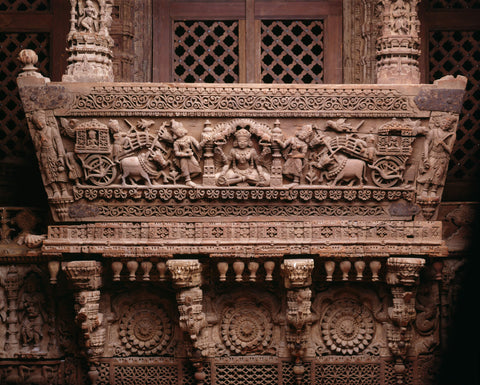
Pic: Relief carving used on an Architectural Ensemble from a Jain Meeting Hall
- Intaglio carving - the opposite of relief carving; think of this as moulding.
- Turning - Spinning wood against a tool. This technique has been used to make our nested dolls.

Pic: Nested dolls in a park setting
- Bending technique - for forming curved surfaces
- Joinery - Joints can either fit against each other, across each other or into each other. They can be used to connect lengthwise or at an angle.
What are different wood decoration techniques?
Once our artisan has craved the product, they can employ a range of decorating and finishing techniques to create the final product. Example of such decorations are paintwork, inlay (insetting shapes into cuts made in the wood), banding, and marquetry (pieces are glued to the surface of a piece of wood).

Pic: example of inlay set in Tic Tac Toe Game Set
Conclusion
In many regions, woodcraft production is vital for community livelihoods. By participating with Fair Trade organisations, we contribute to alleviating poverty and promoting sustainability through ethical practices. These organisations aim to educate and empower disadvantaged sections of the Indian community by providing them with job opportunities, gender equality, fair wages, safe and healthy working environment while preserving the local culture & traditional skills.
Book Reference:
Wood - the world of woodwork and carving







